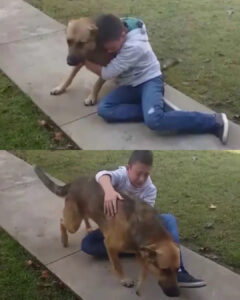Retinoblastoma. It’s a word that strikes fear into the heart of any parent. It is a rare, aggressive, and frightening form of pediatric cancer that attacks the eyes, often in children who are too young to even explain that something is wrong. No parent can ever be prepared for a doctor to sit them down and deliver that news. In an instant, the world of playdates and playgrounds shifts to a terrifying new reality of hospital rooms, tests, and a grueling series of treatments.
This is the world that Jordanna and her daughter Mackenzie have been navigating.
At just three and a half months old, Mackenzie—a little blonde girl with the “brightest smile and the fiercest spirit”—was diagnosed with retinoblastoma. Her fight began before she could even crawl. Since that day, her tiny body has endured seven rounds of chemotherapy, countless appointments, and more physical and emotional challenges than most adults will face in their entire lives.
Today, Mackenzie is nearly one year cancer-free. Her mother, Jordanna, is profoundly grateful for the exceptional care they received at UCSF. The doctors, nurses, and staff there, she says, not only treated her daughter’s illness but also “surrounded our family with compassion and hope.”
But this story isn’t just about the fight against a terrifying disease. It’s about an unexpected moment of grace that happened in the one place they associated with that fight: the hospital.

The “Other” Battle: Insurance and Isolation
What many people don’t see, behind the brave smiles and “cancer-free” milestones, is the second battle that families like Mackenzie’s must fight: the battle of logistics, finances, and profound emotional isolation. While doctors wage war on the cancer, parents wage war on the paperwork.
The treatment for pediatric cancer is astronomically expensive. It involves a whirlwind of specialists, surgical procedures, hospital stays, and powerful medications. For parents, this means an endless, exhausting marathon of phone calls with insurance providers, fighting for pre-approvals, double-checking claims, and praying that a life-saving procedure isn’t denied by a line-item veto. The financial stress alone can be crippling.
Furthermore, the emotional recovery is a journey that can feel impossibly lonely. While friends and family mean well, it is difficult for anyone outside the pediatric cancer world to truly understand the constant, low-humming anxiety, the fear of relapse, or the trauma of watching your child endure so much.
This is why the compassionate care Jordanna mentions is so critical. The programs that make a sterile hospital feel human—the child-life specialists, the playrooms, the emotional support—are often funded by people who donate to hospital foundations. These funds are what allow for moments of humanity to bloom in the midst of a medical crisis.
And in the middle of this long, isolating journey, something magical happened.

A Meeting in Pre-Op
While waiting for Mackenzie to go into a follow-up surgery, her family met another little girl. Her name was Akira. She was just two years old and, in a breathtaking coincidence, was also at UCSF bravely fighting the exact same disease: retinoblastoma.
Here were two little warriors, both carrying scars far too heavy for their small years, meeting in a pre-op room filled with the usual tension and beeping machines.
And yet, when they saw each other, none of that mattered.
Jordanna described what happened next as pure magic. There was no hesitation. No shyness. No fear. Within moments, the two toddlers, who had every reason to be scared and withdrawn, simply found each other.
They held hands. They hugged. They laughed and played as if they had been best friends all their lives.
Full Story: https://aquariumbee.com/tammy-hembrows-bikini-photos-are-stirring-controversy-heres-why-everyones-talking/
Akira’s grandmother, whom she calls “Mama,” watched with tears in her eyes. “This is pure innocence,” she said.
And it was. In that sterile hospital environment, surrounded by adult anxieties, these two little girls chose joy. They created their own safe haven. Their laughter, as Jordanna described it, “cut through the beeping machines and whispered anxieties,” reminding every adult in that room that light can, and will, bloom in the most unexpected places.
A Bond Stronger Than Treatment
As a mother, Jordanna said she couldn’t put into words what that moment meant. For months, she had watched her daughter fight, endure painful procedures, and miss out on a “normal” childhood. Now, she was watching her simply be a child again, holding hands with a new friend, her eyes filled with delight.
This is the side of healing that medicine can’t provide. This is the recovery of the spirit.
For these two families, the future is still uncertain. A retinoblastoma diagnosis means years of check-ups, scans, and living with the fear of the unknown. But on this day, none of that mattered. Jordanna hopes this isn’t just a fleeting moment, but the start of a lifelong friendship. These two extraordinary girls already understand more about courage and resilience than most adults ever will.
Jordanna’s story is a profound reminder for all of us. As she so perfectly put it, “innocence, friendship, and love are stronger than fear.” Sometimes, the greatest healing doesn’t come from a chemotherapy drip or a surgeon’s scalpel. It comes from the simple, pure, and powerful touch of another hand, holding yours, and saying without a single word: You are not alone.



